Idea by
Gordon Morris Leibowitz
Call for ideas 2018
HAUSIFY
HAUSIFY
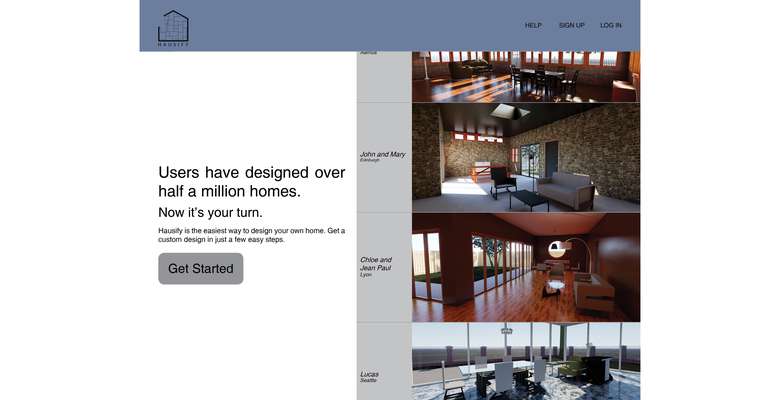
Hausify creates a contemporary architecture without architects, by democratizing architectural knowledge which has grown more esoteric.
Hausify is a procedural design tool, or precedent driven design (PDD) tool. This tool can generate a parti and style through the analysis of user submitted images.
PDD generates a design and applies finishes and furniture to the scheme. These elements come from a catalogue of materials curated by the Hausify team. From this catalogue, the Hausify team is able to develop a catalogue of generic details.
For construction, Hausify generates a 3D model with call outs at detail locations which refer to the detail handbook generated by PDD. PDD modifies the generic detail catalogue to fit the specific design.
PDD gives autonomy to the user, maintains quality and reduces the cost of a designed home. This is not the end of architects; it opens opportunities to work on other projects while providing high-quality design to those who cannot afford it.
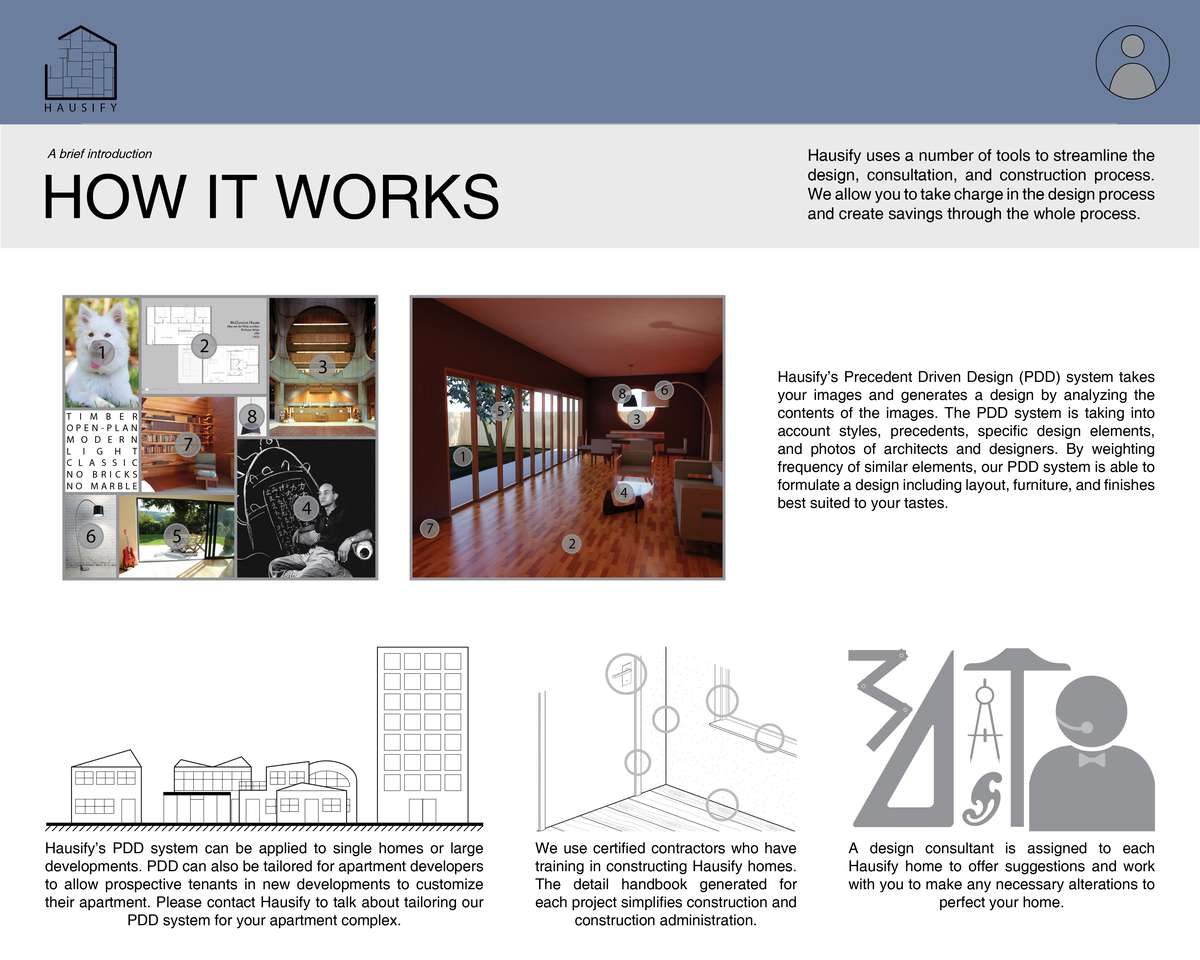
There are four main components of Hausify. PDD allows for custom user-driven design. The system can be applied to individual homeowners, but it can also be curated by a developer to allow prospective tenants in new developments to customize their apartment interior. Construction is streamlined by the use of standard details and registered contractors. The system is managed by the assigned project Design Consultant.

If the user does not have a set of precedents they wish to use, there are premade schemes which can be applied. These schemes are generated from past projects and from architects. Designers can license schemes for use. These licensed schemes can come from any design professional: from well-known architects to architecture students.
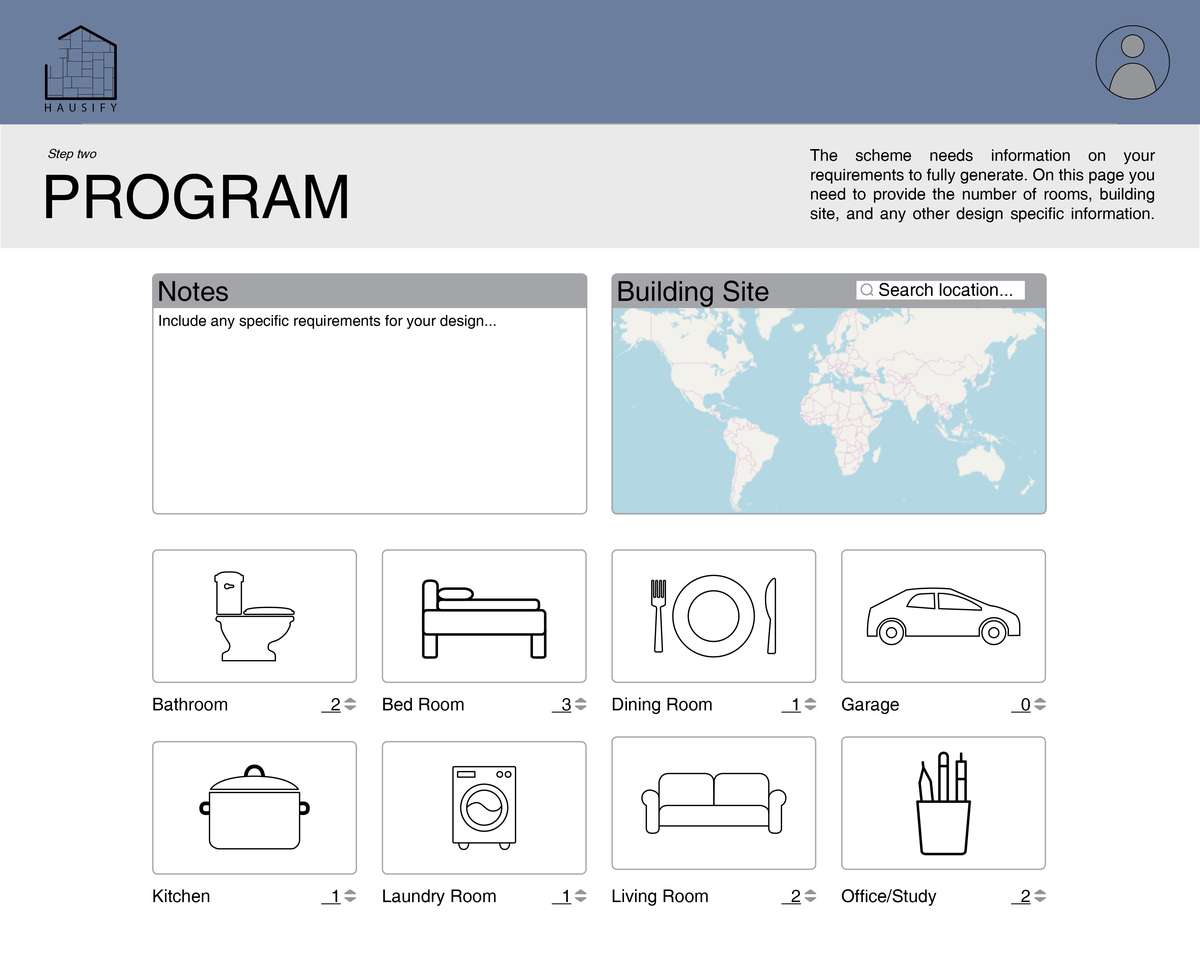
The user can specify the programmatic elements of their home to tailor the scheme to their needs. Users also define their building site with information on lot boundaries pulled from OpenStreetMap. They can also type in any specific keywords like “ensuite bathroom,” “no concrete,” or “large kitchen.”
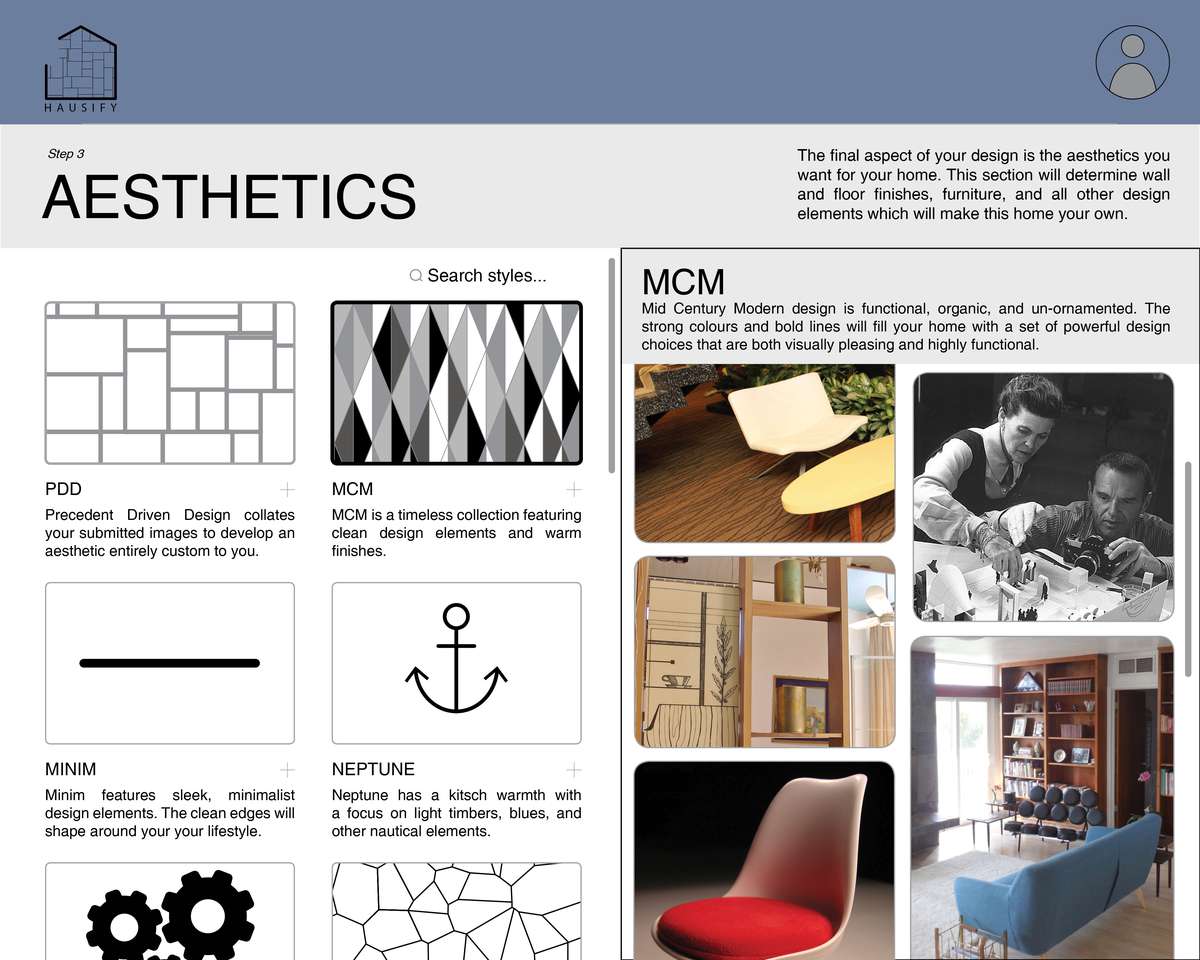
Like Scheme, the user can use PDD or use a set of images curated by a designer. Partnerships in industry provide savings on bulk purchases and legacy deals on materials and interior elements. Users can experiment with PDD throughout the design process. An example input is: images of Gehry’s Bilbao Guggenheim, Kahn’s Exeter Library, Le Corbusier’s Radiant City, along with the program of 6 bathrooms, 5 kitchens, and a laundry room.
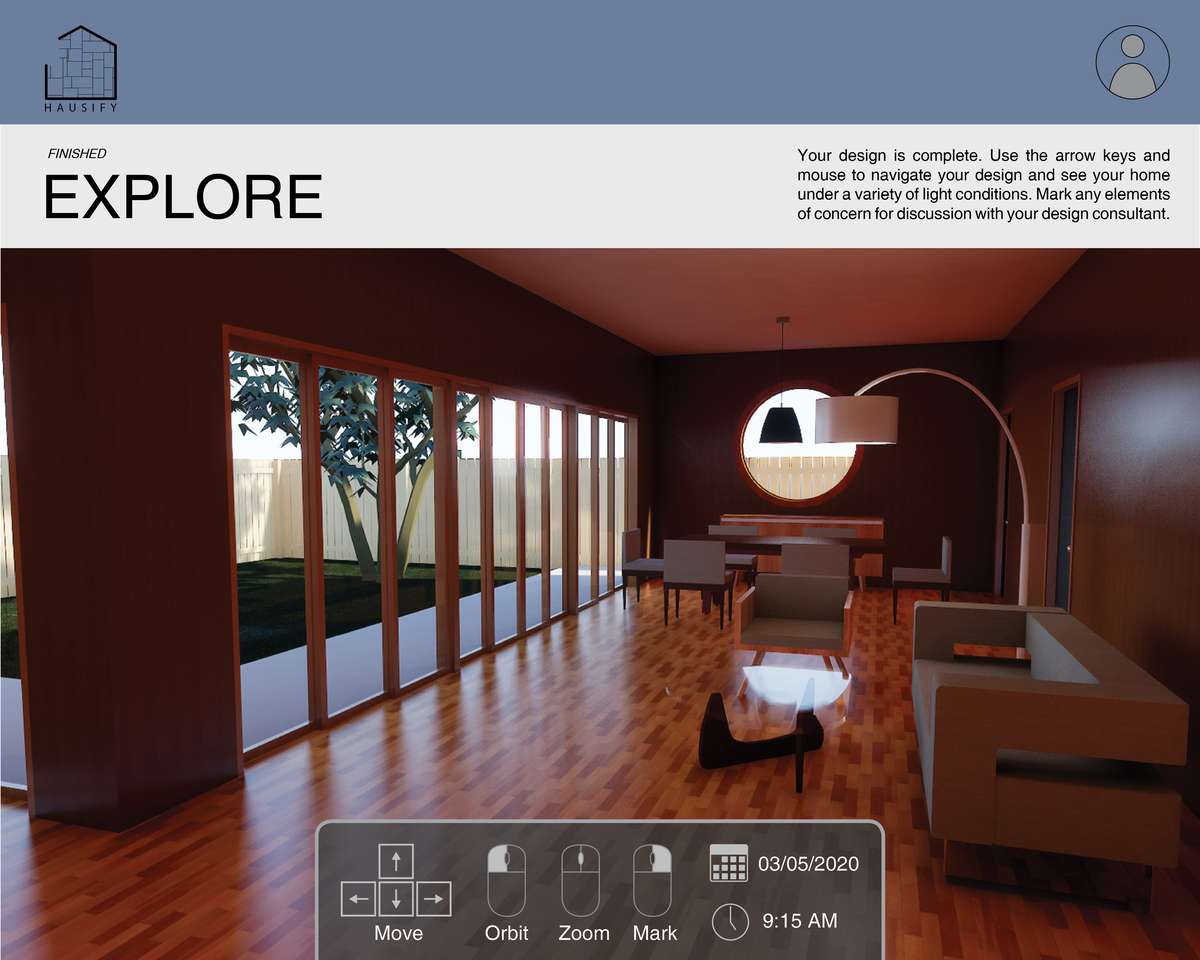
Part of the democratization is using a language accessible for people outside of design. Each project has a design consultant and all design communication is facilitated via web-based 3D visualization app. The user can mark elements for discussion with their consultant. The user is also allocated only a certain number of design sessions with options to pay for more. This minimizes the load on the consultants and streamlines the design to construction process.
HAUSIFY
HAUSIFY

Hausify creates a contemporary architecture without architects, by democratizing architectural knowledge which has grown more esoteric.
Hausify is a procedural design tool, or precedent driven design (PDD) tool. This tool can generate a parti and style through the analysis of user submitted images.
PDD generates a design and applies finishes and furniture to the scheme. These elements come from a catalogue of materials curated by the Hausify team. From this catalogue, the Hausify team is able to develop a catalogue of generic details.
For construction, Hausify generates a 3D model with call outs at detail locations which refer to the detail handbook generated by PDD. PDD modifies the generic detail catalogue to fit the specific design.
PDD gives autonomy to the user, maintains quality and reduces the cost of a designed home. This is not the end of architects; it opens opportunities to work on other projects while providing high-quality design to those who cannot afford it.
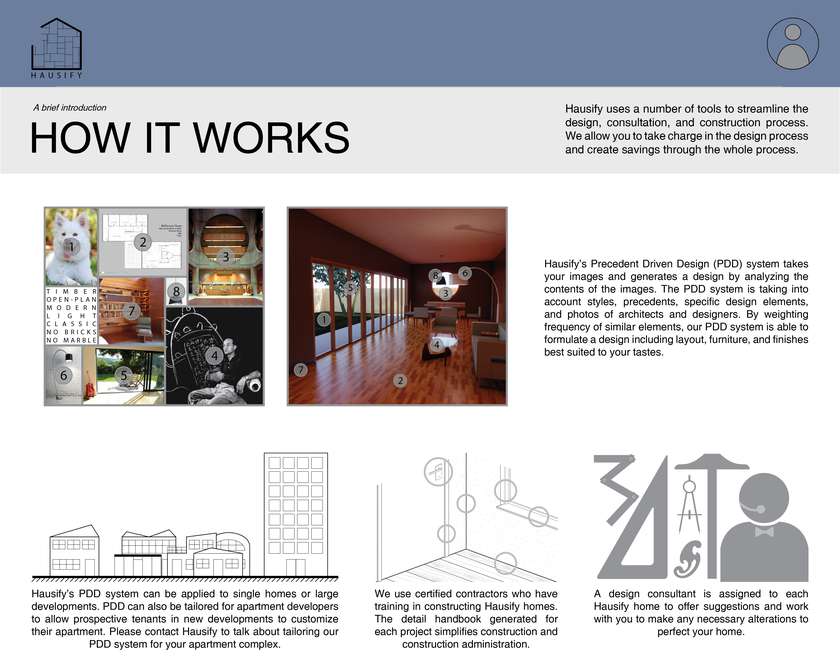
There are four main components of Hausify. PDD allows for custom user-driven design. The system can be applied to individual homeowners, but it can also be curated by a developer to allow prospective tenants in new developments to customize their apartment interior. Construction is streamlined by the use of standard details and registered contractors. The system is managed by the assigned project Design Consultant.
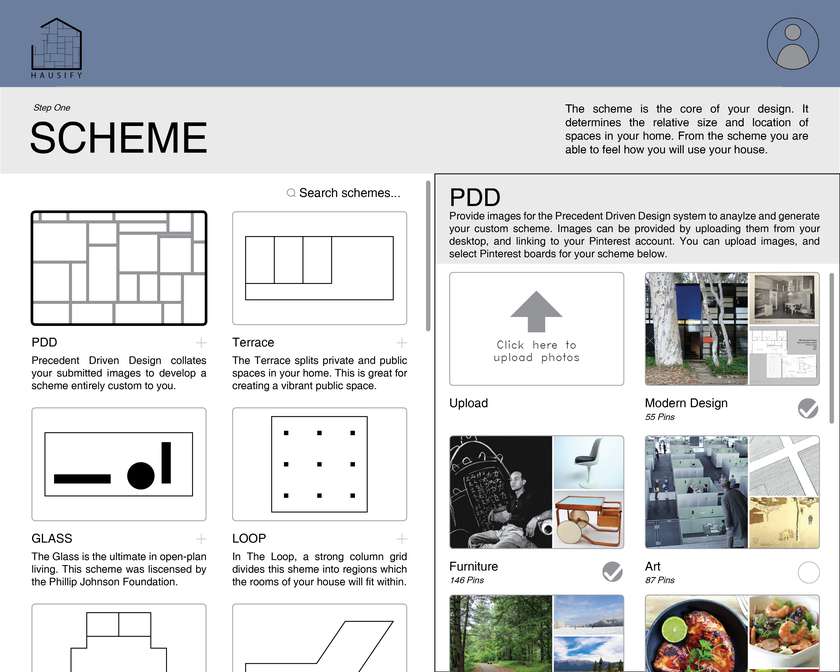
If the user does not have a set of precedents they wish to use, there are premade schemes which can be applied. These schemes are generated from past projects and from architects. Designers can license schemes for use. These licensed schemes can come from any design professional: from well-known architects to architecture students.

The user can specify the programmatic elements of their home to tailor the scheme to their needs. Users also define their building site with information on lot boundaries pulled from OpenStreetMap. They can also type in any specific keywords like “ensuite bathroom,” “no concrete,” or “large kitchen.”
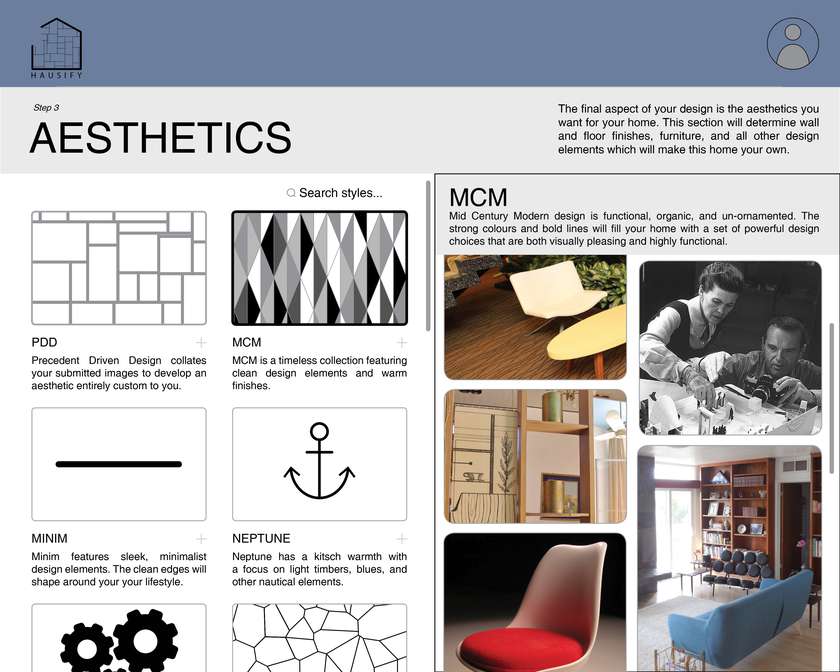
Like Scheme, the user can use PDD or use a set of images curated by a designer. Partnerships in industry provide savings on bulk purchases and legacy deals on materials and interior elements. Users can experiment with PDD throughout the design process. An example input is: images of Gehry’s Bilbao Guggenheim, Kahn’s Exeter Library, Le Corbusier’s Radiant City, along with the program of 6 bathrooms, 5 kitchens, and a laundry room.
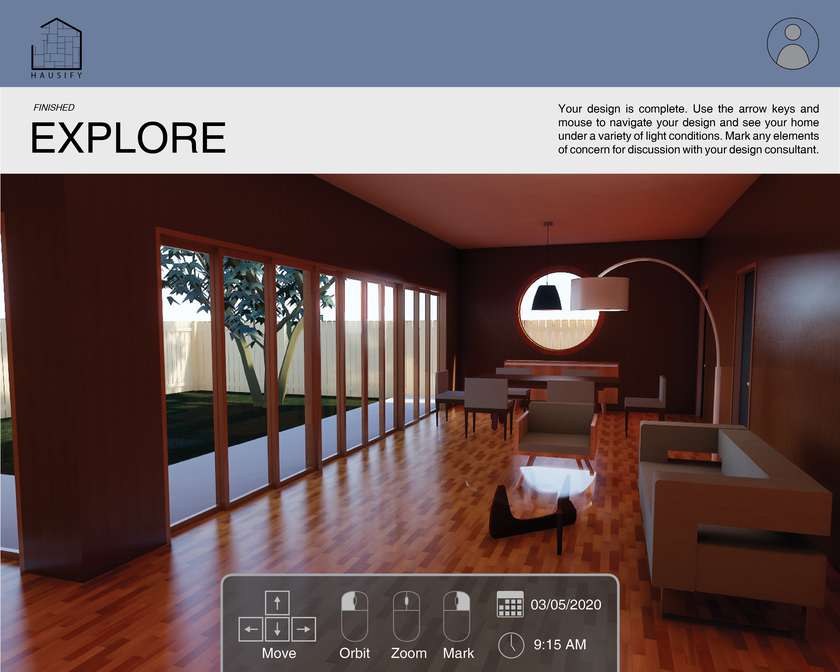
Part of the democratization is using a language accessible for people outside of design. Each project has a design consultant and all design communication is facilitated via web-based 3D visualization app. The user can mark elements for discussion with their consultant. The user is also allocated only a certain number of design sessions with options to pay for more. This minimizes the load on the consultants and streamlines the design to construction process.